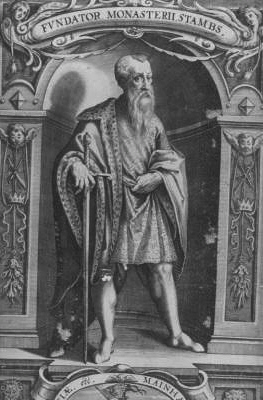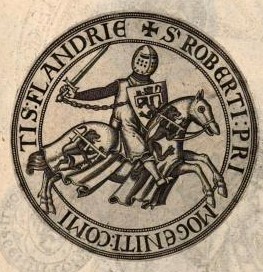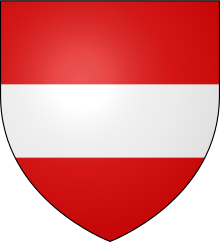Year 1376 (MCCCLXXVI) was a leap year starting on Tuesday of the Julian calendar.

Rudolf I was the first King of Germany from the House of Habsburg. The first of the count-kings of Germany, he reigned from 1273 until his death in 1291.

Peter, also Peter II of Courtenay, was emperor of the Latin Empire of Constantinople from 1216 to 1217.
Yolanda, often called Yolanda of Flanders, was Empress of the Latin Empire in Constantinople, first as the wife of Emperor Peter from 1216 to 1217 and thereafter as regent until her death in 1219. Peter was captured and imprisoned before he could reach Constantinople, so Yolanda assumed the duties of governing the Empire. She was ruling Marchioness of Namur from 1212 until 1217.

Richard II, called the Good, was the duke of Normandy from 996 until 1026.

Meinhard II, a member of the House of Gorizia (Meinhardiner), ruled the County of Gorizia and the County of Tyrol together with his younger brother Albert from 1258. In 1271 they divided their heritage and Meinhard became sole ruler of Tyrol. In 1286 he was enfeoffed with the Duchy of Carinthia and the adjacent March of Carniola.

Godfrey I, called the Bearded, the Courageous, or the Great, was the Landgrave of Brabant, Count of Brussels and Leuven (Louvain) from 1095 to his death and Duke of Lower Lorraine from 1106 to 1129. He was also Margrave of Antwerp from 1106 to his death.

Robert III, also called Robert of Béthune and nicknamed The Lion of Flanders, was the Count of Nevers from 1273 and Count of Flanders from 1305 until his death.

The Counts of Vianden, ancestors of the House of Orange-Nassau, were associated with the castle of Vianden in Luxembourg.

Elisabeth of Bavaria, a member of the House of Wittelsbach, was Queen of Germany and Jerusalem from 1246 to 1254 by her marriage to King Conrad IV of Germany.
The House of Sponheim or Spanheim was a medieval German noble family, which originated in Rhenish Franconia. They were immediate Counts of Sponheim until 1437 and Dukes of Carinthia from 1122 until 1269. Its cadet branches ruled in the Imperial County of Ortenburg-Neuortenburg and various Sayn-Wittgenstein states until 1806.
Margaret, Marchioness of Namur was ruling Marchioness of Namur, from 1229 to 1237. She was the daughter of Peter of Courtenay, Latin Emperor of Constantinople (1216-1219) and Yolanda of Flanders. By marriage to Henry I, Count of Vianden, she was Countess-consort of Vianden.
Margaret of Cleves, also spelled Margaretha or Margarethe was the wife of Count Adolf II of the Marck and mother of Adolf III of the Marck. She was a daughter of Count Dietrich VIII of Cleves and Margaret of Guelders, who was a daughter of Reginald I of Guelders.

Count John III the Younger of Nassau-Siegen, German: Johann III. der Jüngere Graf von Nassau-Siegen, succeeded, with his brothers, his father in 1416 as Count of Nassau-Siegen. With his brothers, he inherited the County of Vianden in 1417, and also inherited half of the County of Diez in 1420. He descended from the Ottonian Line of the House of Nassau.

Henry I (c.1200–1252) was the hereditary Count of Vianden from 1210 and, through his wife, Marquis of Namur from 1229.
Marie of Namur, also known as Marie de Namur or Maria van Dampierre. Her titles were Gräfin von Vianden, from her first marriage and Dame de Pierrepont, from her second marriage to, Theobald of Bar.
The counts of Chiny were part of the nobility of Lotharingia that ruled from the 9th to the 14th century in what is now part of Belgium.

Arnold V de Looz, was Count of Loon from 1279 to 1323 and Count of Chiny from 1299 to 1310. He was the son of John I, Count of Looz and Mathilde Jülich.
This page is based on this
Wikipedia article Text is available under the
CC BY-SA 4.0 license; additional terms may apply.
Images, videos and audio are available under their respective licenses.











